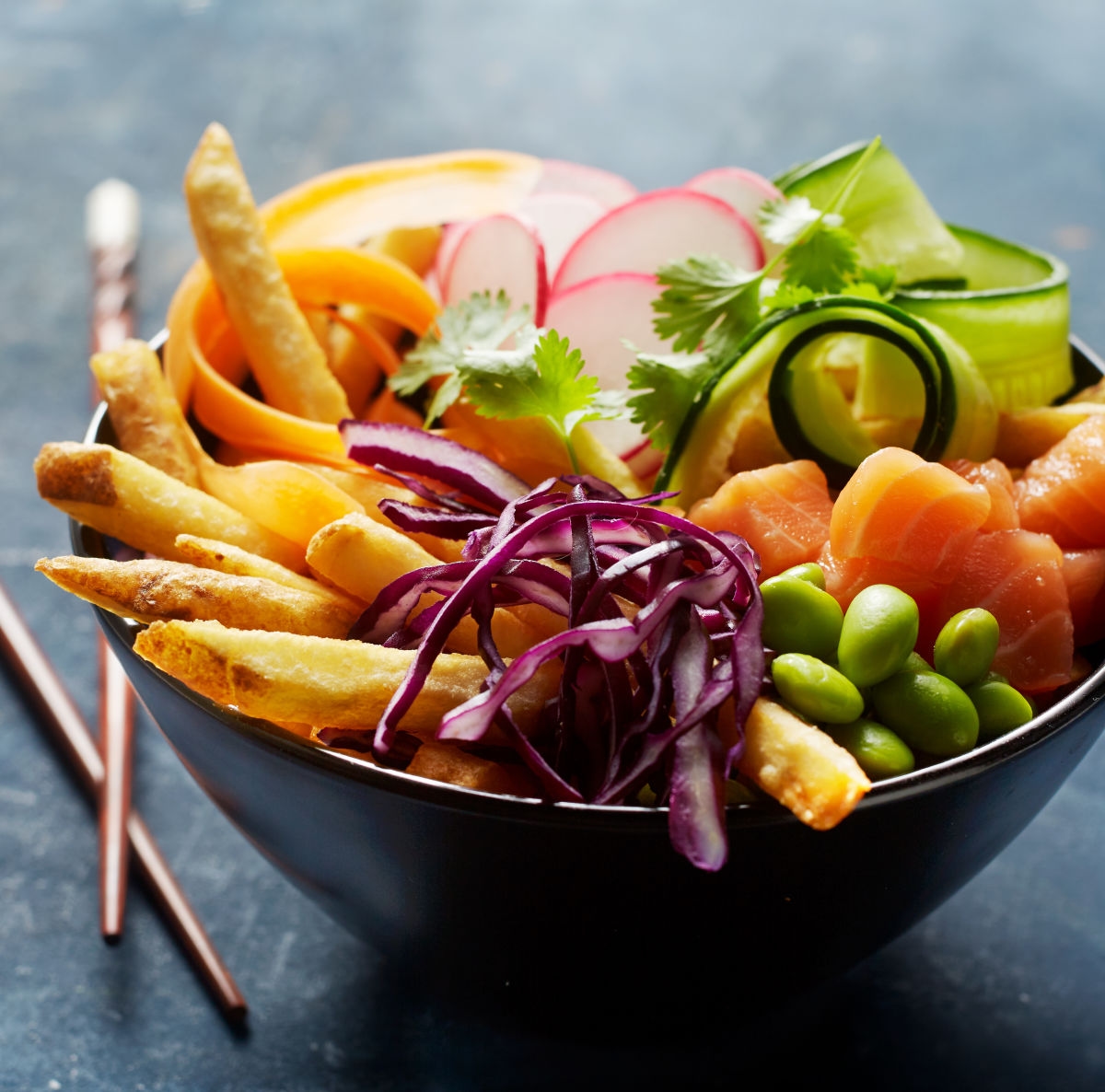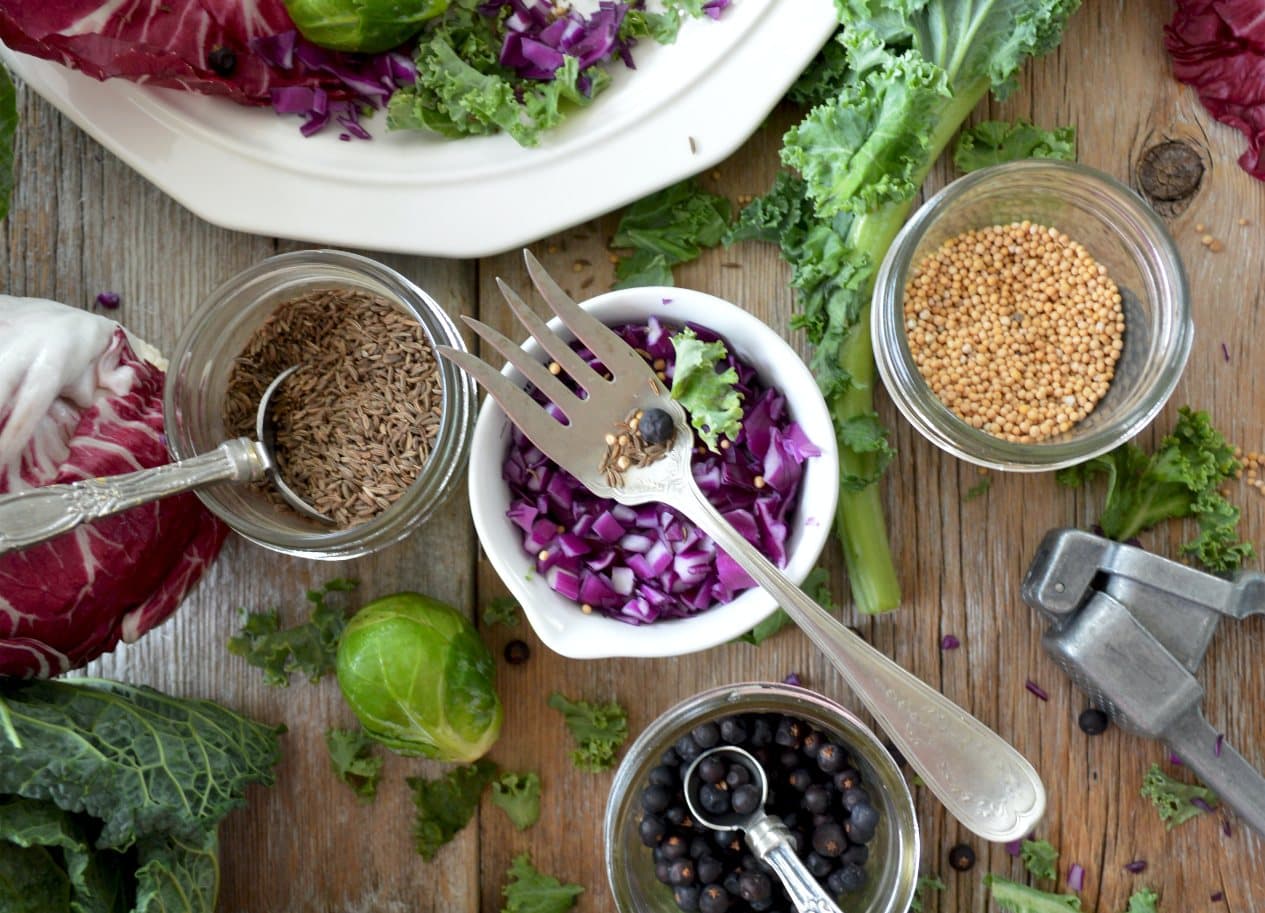
Poke Bowls – An unstoppable trend in dining
They are served in vegetarian varieties, with meat, seafood, or fish. The number of variations and possibilities of combining the ingredients are limitless, and it’s one of the reasons why poke bowls have become so popular all over the world. Few people know that they originate from Hawaiian cuisine and are beloved dish of surfers. Read this article to learn where the Hawaiian bowl full of goodies has come from, what it has in common with the Japanese sushi, and why it stormed street food all over the world.
"Poke" means "cut into pieces"
What are these popular bowls? Nutritious but light dishes served in bowls, usually coming with rice, fish and fresh vegetables or fruit. Poke bowl is a Hawaiian dish strongly rooted in the Japanese cuisine. "Poke" means "cut into pieces" and the name refers to slices or pieces of raw fish, served in the bowl over rice, with dressing, vegetables and spices. Originally, poke have been made of almost the same ingredients as sushi (it is sometimes called deconstructed sushi), the difference being that rice remains hot in the Hawaiian dish.
This is exactly the biggest secret of taste of this dish. The bowl serves hot rice and cold fish, which combine only in your mouth, which ensures an explosion of taste! That's why the dish should be prepared just before serving. If serving time is too long, temperatures level up, which destroys the very concept of this delicacy. On the wave of the bowl craze, many variations of that dish have been invented. Rice is often replaced with Asian (soy or rice) noodles, a piece of meat or tofu are added instead of fish, and the entire thing is often garnished with sauce or a scatter of grains and nuts.

Some history
Where poke bowls actually come from? It's a mixture of ingredients characteristic of the Japanese, Chinese, Philippine and Portugal cuisine. The dish combines some influences of all of these cuisines which met together in Hawaii in the 19th and 20th centuries due to economic migrations. Ethnic groups which stayed in these paradise islands were disseminating their beloved, native dishes, which has resulted in today's hybrid bowls. In the early 20th century, the Japanese dominated the Hawaiian population (about 40%!). They came to the islands to work on sugar and pineapple plantations. Soon after, they started growing rice, produce local soy sauce, and have popularised sashimi or tofu.
The native Hawaiian population, Japanese migrants and other migrant groups in the islands (Philippines, Portuguese, etc.) loved raw fish, so a combination of all those ingredients has become inherent part of local cuisine. Traditional bowls (which have come to be prepared in Hawaii in the 1970s) included raw tuna fish, chopped seaweed and pekan nuts. Soon, rice was added to the dish, then dressing and other ingredients. Present-day bowls are fanciful variations on these original bowls - they can include rice, Asian noodles, seafood, (raw or roasted) fish, marinated vegetables, exotic fruit, Asian seasonings - soya sauce, teriyaki or wasabi, with attractive dressings.

Strong cuisine trend
From Hawaii to other US states, to Europe - the bowl trend began some time ago and has remained strong. Colourful bowls full of fresh ingredients have not only hit street food globally, but also inspired many restaurants to serve their classic dishes in bowls something like traditional bowls. How to prepare a poke bowl or a dish inspired by this Hawaiian trend? Quite simple, the potential for experimenting with ingredients is limitless! Below are some hints:
- Despite that hot rice is a base for the original poke bowl, this can be replaced with rice or soy, or soba noodles, or quinoa. Noodles - like rice in the original version - can also be served hot, e.g., in coconut milk.
- The crucial ingredient in this Hawaiian dish is raw fish, and this is where its name comes from. Tuna fish or salmon sashimi should be prepared by cutting fish fillets first along and then into strips or cubes. Don't want fish in your dish? You can replace it with fried chicken, shrimp tempura, boiled crab meat or teriyaki beef. In vegetarian variations, tofu can be perfect; you can first marinate them, fry or just spice with Asian seasonings.
- If you serve a bowl with raw fish, its flavour will be perfectly complemented by soy sauce. Depending on other ingredients in the bowl, you can also use a dressing based on tahini, peanut butter, mango chutney, rice vinegar, or coconut molasses.
- Fresh veggies is a must for absolutely all bowls. Matchstick carrots, cucumber, lettuce, red onions or avocado perfectly match almost everything. Try vegetables with attractive colours which make bowls look good and appealing. It's up to you what vegetables you choose.
- To intensify poke bowl flavour, try adding some ingredients typical of Asian cuisine. Such products as marinated ginger, wakame algae, or wasabi will be perfect. The entire dish can be garnished with shred spring onions or sesame grains.

Poke Bowls – Highly Instagrammable
It's up to you what you put into your poke bowl. The bowls served today in restaurants are so diverse that you can experiment and go wild with tastes. What's important is to fill the dish with ingredients which add together in interesting ways, but have different textures and colours. By this, your dishes with gain attractive, appealing look, and - above all - an intriguing, distinctive flavour.
How to serve your dish? The variety of ingredients makes this dish look appealing by itself and requires no special, fancy tableware or decorative elements. As the name indicates, poke bowls are served in bowls, quite big and spacious ones. Since the dish resembles Japanese cuisine, you can offer chopsticks to your guests instead of traditional cutlery.
The world has gone crazy with poke bowls. How popular they are is shown by the sheer number of #pokebowl hashtags on Instagram - almost 900,000! No wonder - this Hawaiian dish has many values. It's exceptionally tasty and wholesome, is quick to prepare, looks nice and contains a whole host of valuable nutrients. If you want to keep up with the expectations of restaurant customers, consider introducing poke bowl menu - not necessarily in its traditional, Hawaiian variety. You can develop your own unique variation of flavours, dry or sweet/dessert. Customers who expect modern culinary experience will certainly appreciate it!
Delivery and takeaway bowl?
Recent times have seen dynamic growth of the Food Delivery segment, and the continuing pandemic and the related restrictions imposed on the restaurant sector in various countries have accelerated this growth even more. Will a bowl menu work well in its delivery and takeaway versions? Absolutely. Both the form of the bowl (for deliveries, e.g., paper), and the ingredients (rice, matchstick veggies, grains, fish pieces, separately packed sauce) are perfectly suitable for transport, and the quality is maintained. It's worth considering how to stand out from many offerings in the market and deliver something special to your customers. Maybe an option to compose your own bowl - over the base and a selection of extras to choose from? Or thematic bowls, e.g., as a cuisine trip around the world.
(Photo credits: Unsplash.com)


